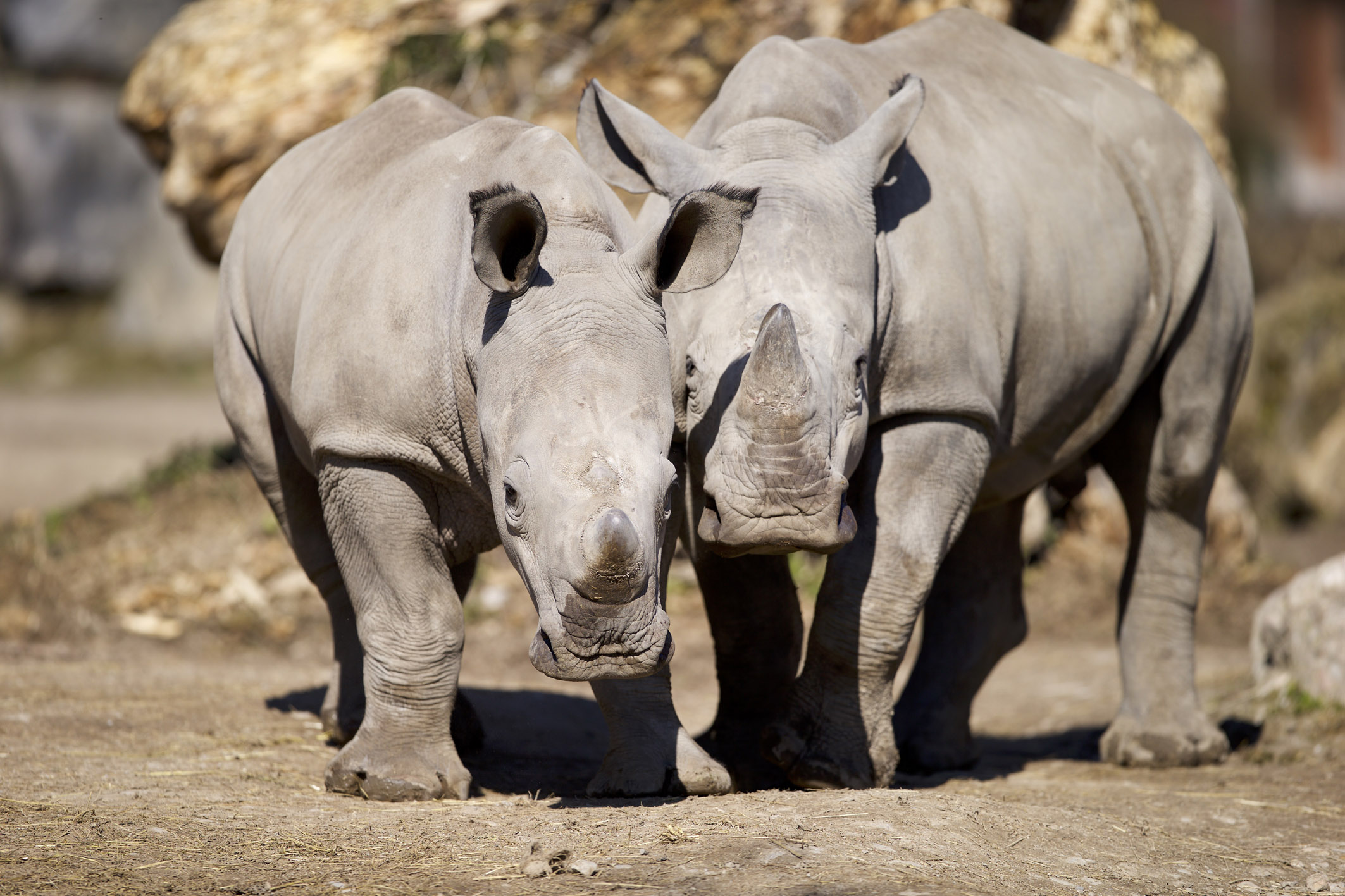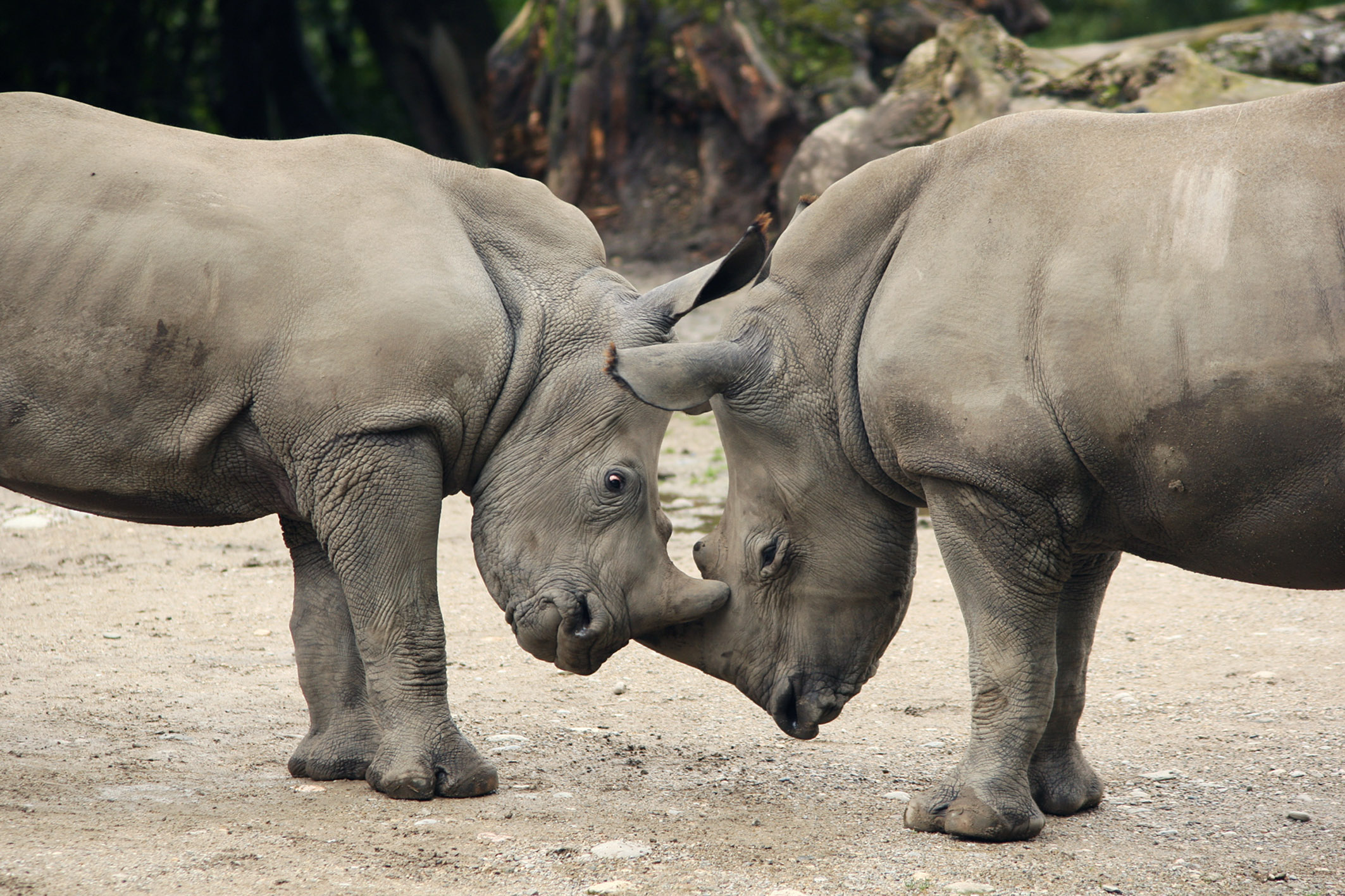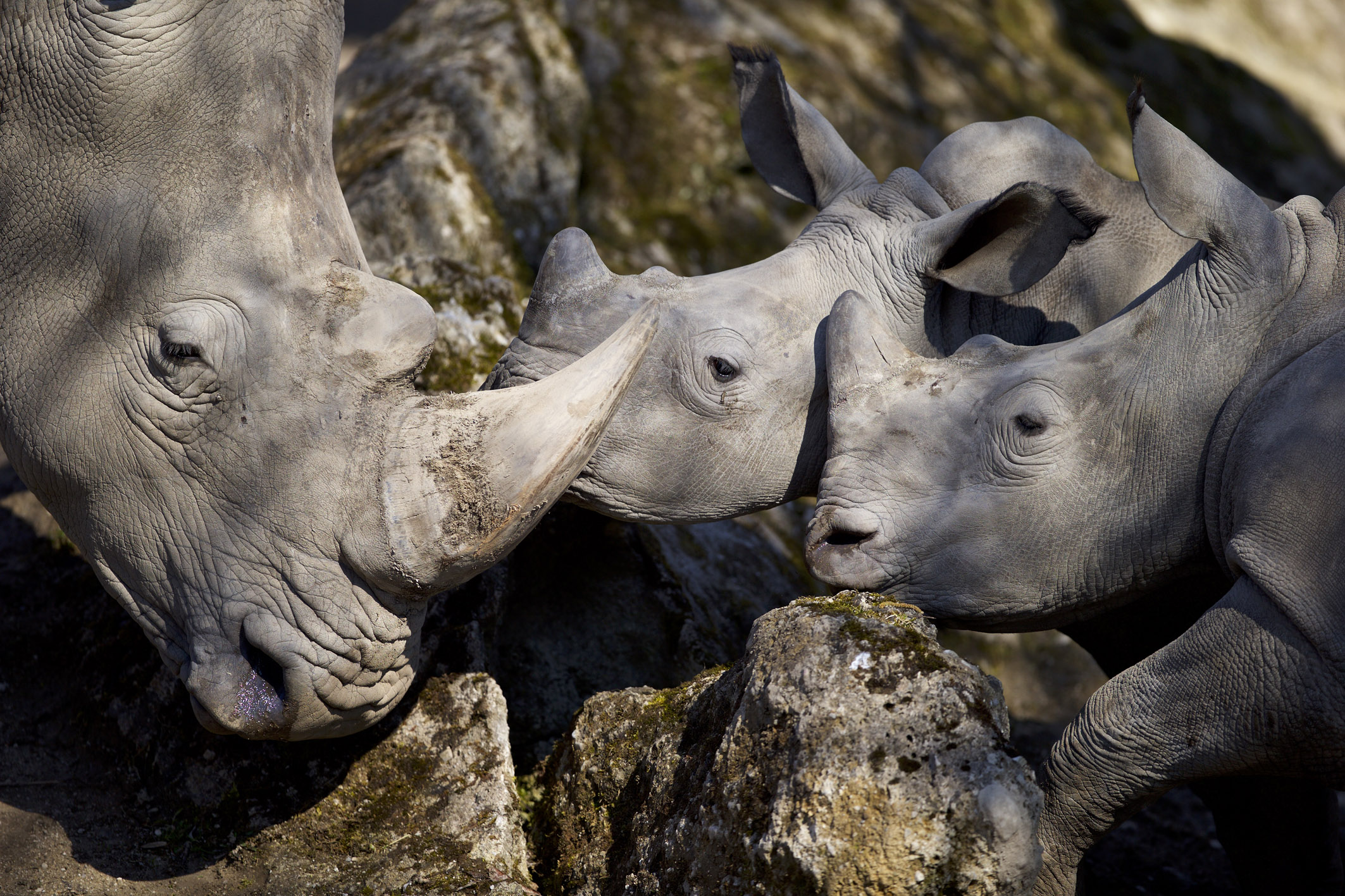Rhinos – The Fight for Their Survival
Trading of rhino horns has been officially prohibited for about four decades. However, since particularly in China and Vietnam, healing and aphrodisiac effects are attributed to the rhino horn, horrendous prices are paid for it on the black markets – with fatal results: The species is at the very edge of extinction.
Since 2013, the Academy for the Protection of Zoo Animals and Wildlife has been advocating for the protection of endangered rhinos – initially through a special project for captive breeding in the Salzburg Zoo. Since then, however, the Academy has become involved in a scientific pan-European species conservation project of the renowned Leibniz Institute for Zoo and Wildlife Research (IZW) in Berlin.
This commitment had started in Salzburg: the city’s zoo director Sabine Grebner called for Prof. Dr. Henning Wiesner’s scholarly, zoological and veterinarian assistance because of his decades of practical experience as zoo veterinarian and managing director of the Munich Tierpark Hellabrunn. As part of this, there was mention of the rhino offspring – or lack therefor – in Salzburg: Rhino bull Athos did not show any interest in his female companions. Wiesner recommended artificial insemination and, in preparation for it, adjusted the animal’s keeping and feeding. A team of IZW specialists undertook the insemination itself: Prof. Dr. Thomas Hildebrandt, Dr. Frank Göritz and Dr. Robert Hermes are specialists in this field. In so doing, the Salzburg Zoo immediately got two young calves that are developing wonderfully and have become the zoo visitors’ favourite attraction.
As a result, the idea to support in-vitro fertilization for rhinos in general developed. However, not just the insemination is important, but the artificial fertilization. While for rhinos this is still in the early stages, it is very likely the only method to prevent some subspecies from extinction and to maintain their biodiversity. When in Salzburg, the IZW took a large step together with Henning Wiesner: With newly developed special equipment they succeeded to detect individual follicles in the ovaries of the then 33-year-old white rhino cow Kifaru. The next goal now is to stimulate follicles and oocytes. Consequently, there is hope to obtain oocytes from other rhinos nationally and internationally – an undertaking that will receive support from the Academy in the future as well.■





